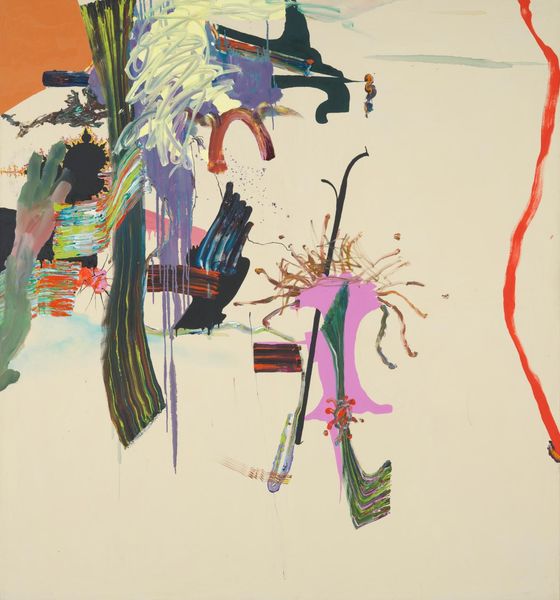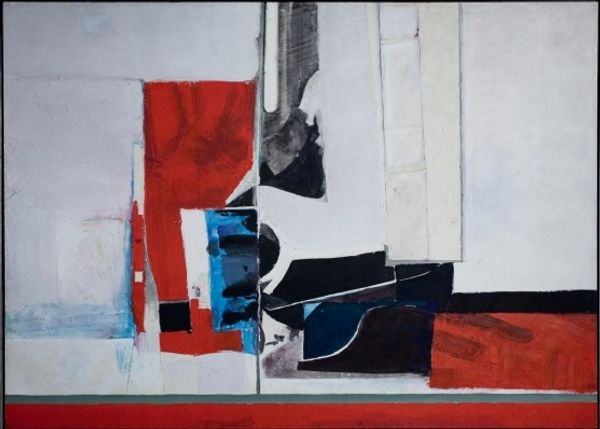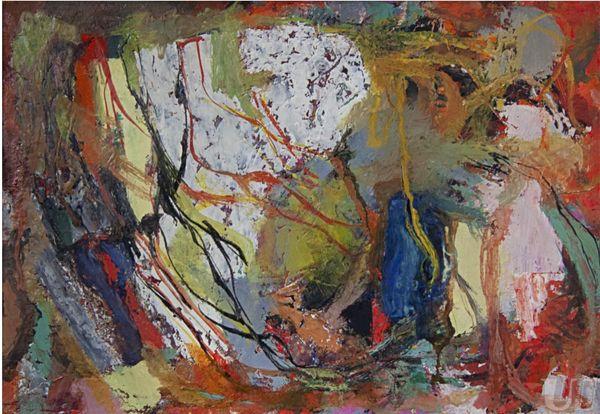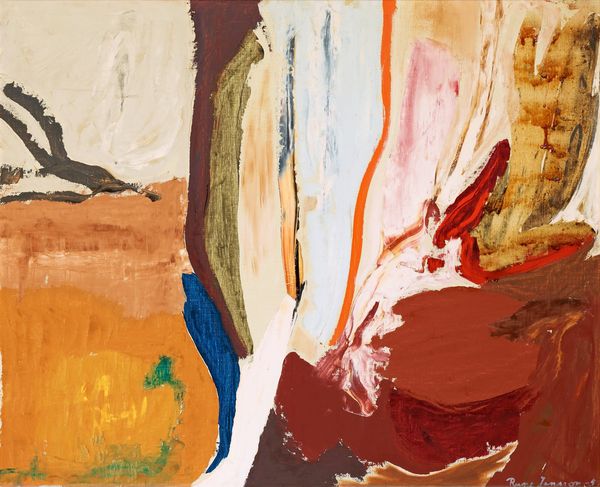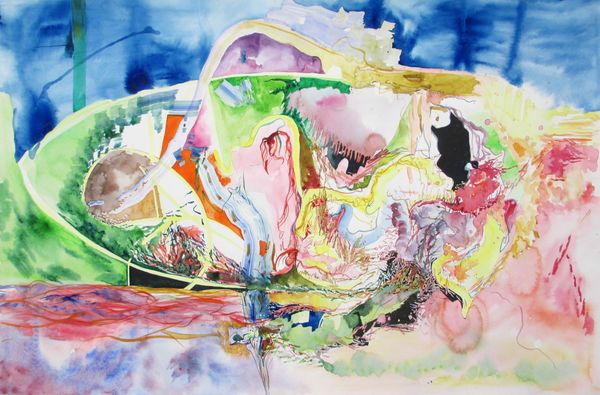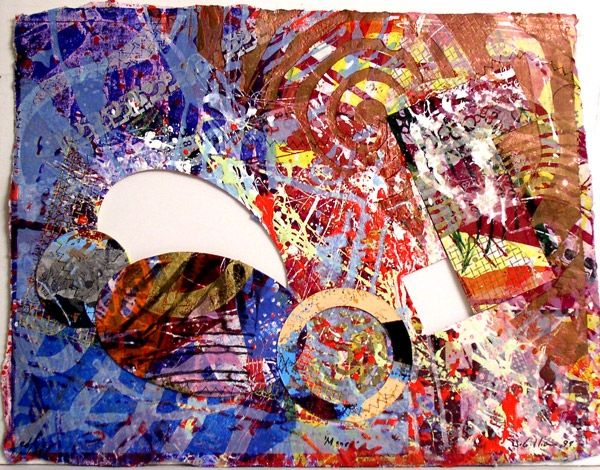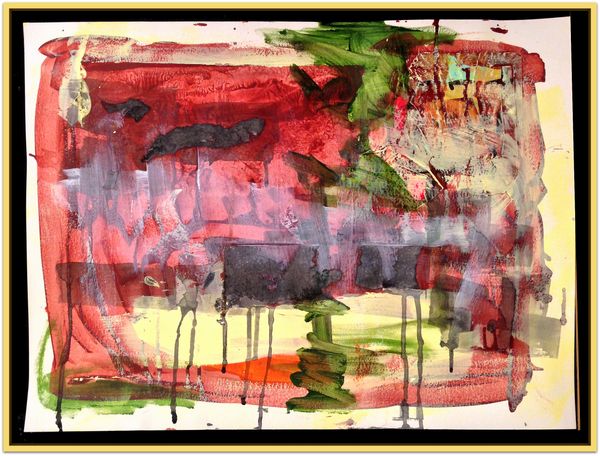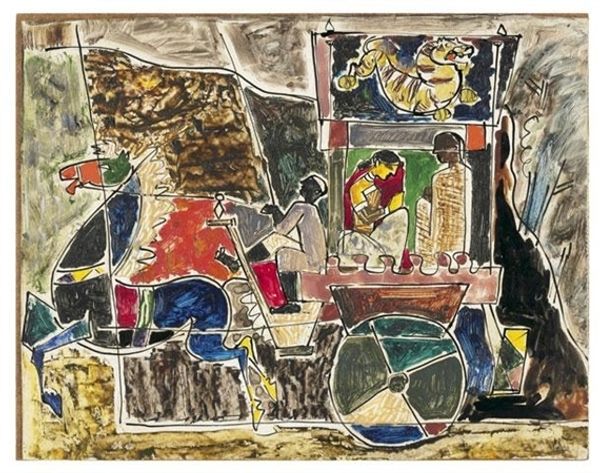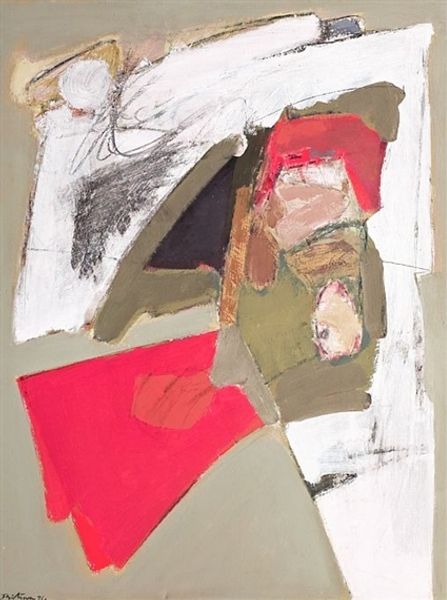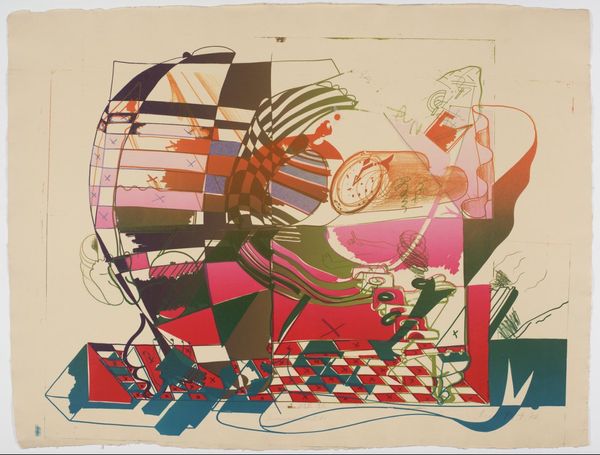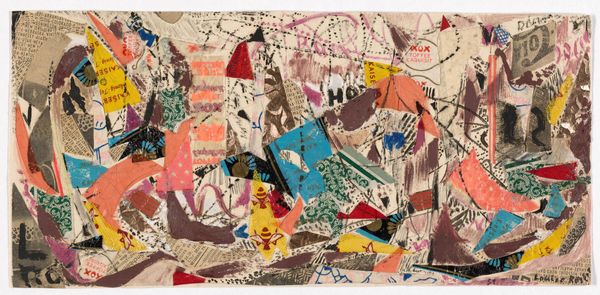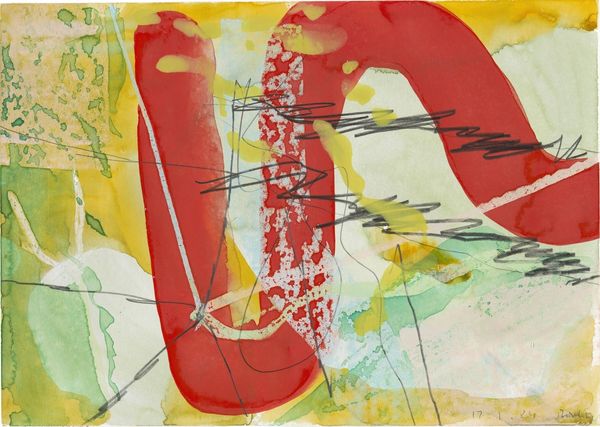
painting, acrylic-paint
#
painting
#
acrylic-paint
#
geometric
#
abstraction
#
modernism
Dimensions: 130 x 195 cm
Copyright: Jorge Castillo,Fair Use
Curator: Immediately, I'm drawn to the fragmented forms and the somewhat dissonant palette. It's unsettling yet intriguing, like a deconstructed memory. Editor: Indeed. Let’s delve into Jorge Castillo’s “The House in the Country," an acrylic painting dating from 2008. What is remarkable here is Castillo’s modern sensibility, how he captures a sense of space while fracturing it. Curator: Fracturing is a good way to put it. The geometric shapes jostle against each other, preventing the eye from resting. The eye hops from the reddish cubes at the top, jumps to the flowers down low, is startled by an element of white and gray, and moves on to whatever comes next. Is it a house? A still life? It defies easy categorization. Editor: Perhaps that’s the point. Given that Castillo lived through the Franco regime in Spain and its aftermath, might it reflect something about societal disruption, where personal identity is fragmented? We're so accustomed to art validating the establishment. Could an image like this confront that assumption? It certainly eschews realism. Curator: I see that, especially in how he re-imagines domestic space, yet one must acknowledge that artists sometimes make use of socio-political realities. Artists were grappling with abstraction throughout Europe in the decades following the two World Wars, and, whether consciously or not, some inevitably worked from an anti-establishment sensibility, reacting against the aesthetics that preceded those catastrophes. Editor: Precisely. There is also a conversation around memory at work, here. A domestic still life would often be presented as comfortable, charming even, a safe space for reflection. Here it looks slightly haunted. Even menacing, to some degree. But then that raises further questions regarding art as a weapon for freedom, no? It is about using what is available. Curator: In truth, it embodies Castillo’s deep fascination with visual deception and re-evaluation of mundane, everyday subjects. Editor: Ultimately, Castillo compels us to look beyond surface aesthetics. This challenges us to confront our perceptions and socio-political condition, while simultaneously exploring the enduring relevance of our collective experience.
Comments
No comments
Be the first to comment and join the conversation on the ultimate creative platform.
